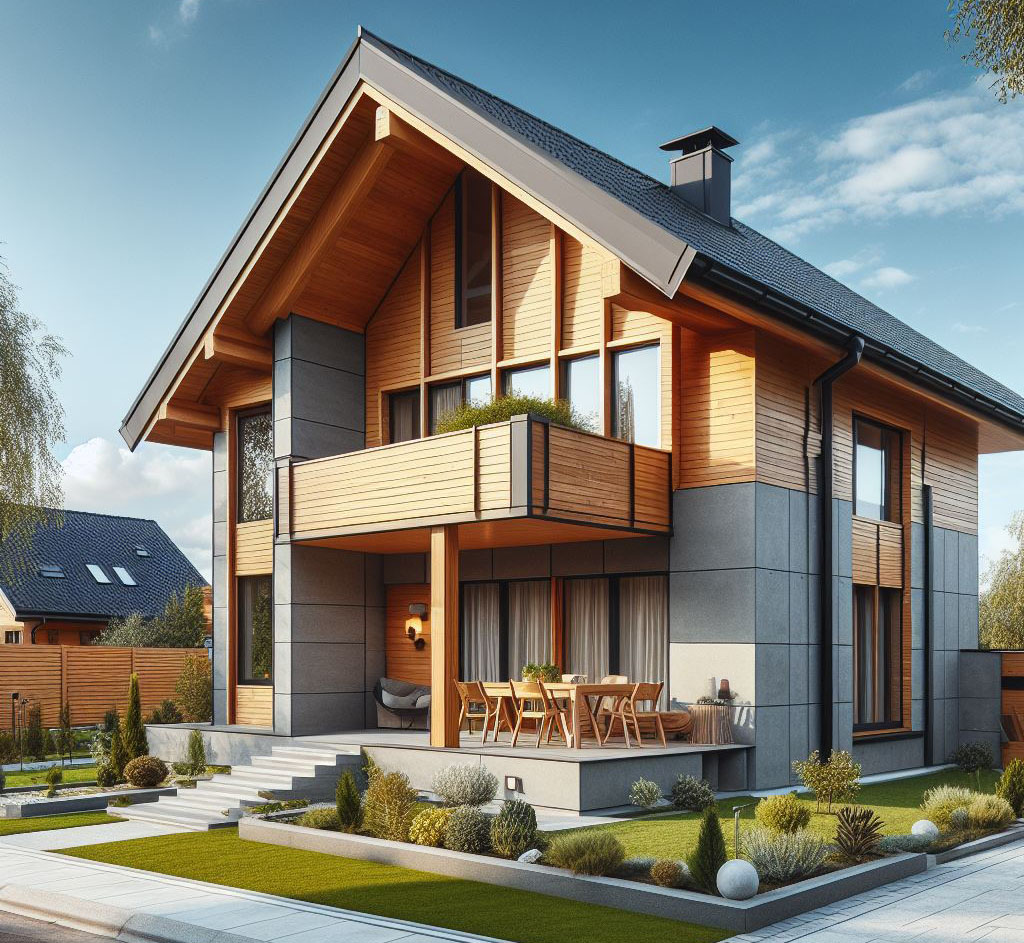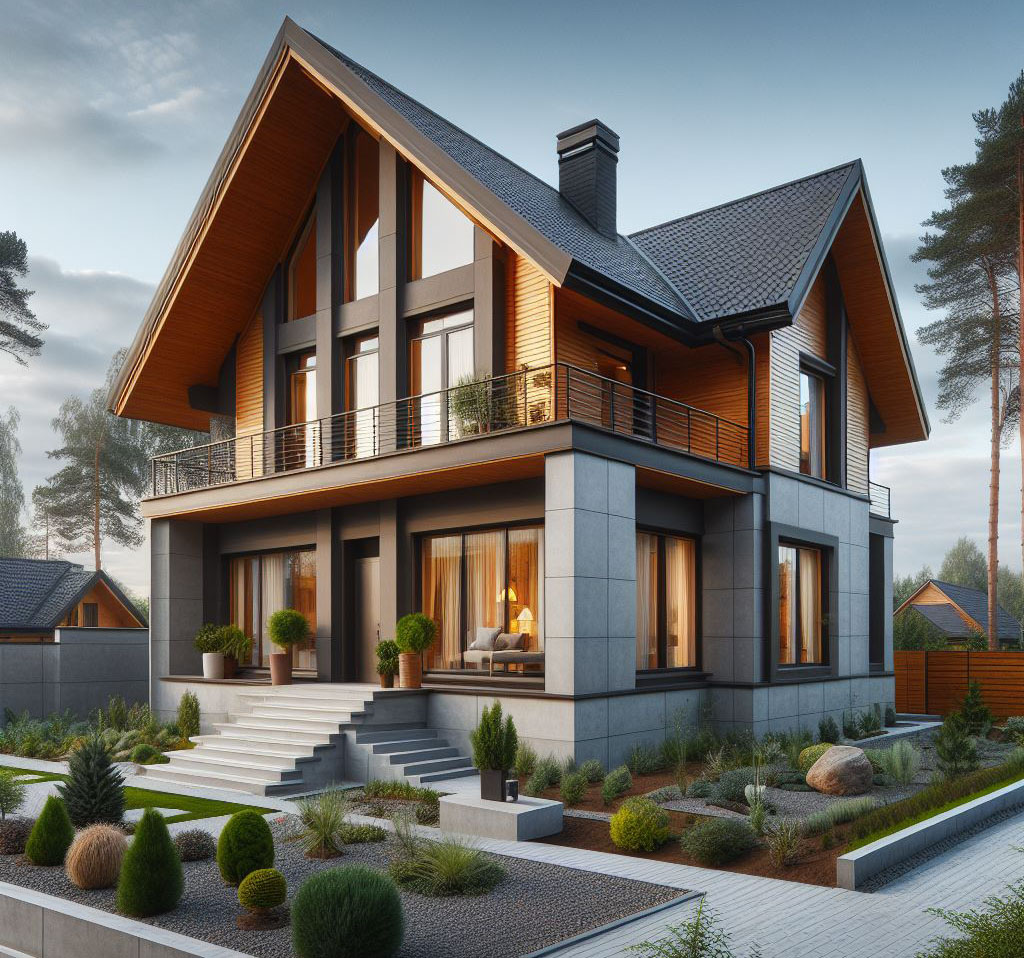Exterior wood siding does more than just dress your home, it shields it, breathes with it, and ages with it. Wood, by its very nature, offers a blend of utility and beauty that is hard to replicate with any other material. Its insulating qualities can mean the difference between a cozy winter evening and a drafty night. The natural allure of wood can elevate the simplest of designs to something truly special, while its adaptability allows for a wide range of finishes and applications.

Diving into Types of Wood Siding
Traditional Lap Siding
The charm of traditional lap siding lies in its simplicity and time-tested durability. Each board slightly overlaps the next in a dance as old as time, directing water away from the walls and laying the groundwork for a home that stands strong against the elements. For those tackling this style, precision is paramount. A level line and a keen eye can ensure that the overlap is consistent, maintaining the rhythm that lap siding is known for. It’s a nod to tradition that suits just about any home.
Board and Batten
Board and batten siding offers a visual contrast that can elevate a structure’s facade from mundane to striking. The interplay between the broad boards and the narrow battens adds a depth and texture that can complement a wide range of architectural styles. Achieving the perfect board and batten look requires attention to detail, especially in the spacing of battens. Missteps here can disrupt the visual harmony, so measure carefully and use tools wisely to maintain uniformity.
Shingles and Shakes
Opting for shingles or shakes is a declaration of style and character. Shingles, with their uniformity and smooth edges, offer a refined look, while shakes, with their varied textures and sizes, bring rustic charm and warmth. The installation of these materials is akin to weaving a tapestry, each piece layered meticulously over the next to ensure a waterproof barrier that’s as beautiful as it is functional. This method requires patience and a discerning eye to achieve the desired effect, making it a rewarding challenge for builders.
Engineered Wood Siding
Engineered wood siding is a testament to the advancements in construction materials, blending the classic appeal of wood with modern technology. This composite material stands up to the elements and time, offering a low-maintenance alternative to traditional wood siding. Its installation is streamlined, designed for efficiency without sacrificing aesthetic appeal. For those concerned with environmental impact, engineered wood is a sustainable choice, utilizing less wood and offering greater durability.
Types of Cedar Siding
Cedar siding, with its natural resilience and beauty, stands out for its ability to resist decay and deter pests naturally. Whether you’re drawn to the shadow lines of bevel siding, the seamless look of tongue-and-groove, or the textured depth of channel siding, cedar offers options to suit any taste. The secret to cedar’s longevity lies in selecting the right finish, one that will enhance its natural colors and protect it from the vagaries of weather.

Considerations When Choosing Exterior Wood Siding
Choosing the right exterior wood siding for your project is more than a mere aesthetic decision, it’s a commitment to the longevity and protection of your home. With insights drawn from years of hands-on experience, let’s delve into the critical considerations that should guide your selection process, practical installation tips, and essential maintenance advice to ensure your siding serves you well for years to come.
Durability and Maintenance
The life expectancy of wood siding varies significantly across different types. For instance, cedar and redwood stand out for their natural resistance to decay and pests, promising a lifespan of 25 years or more with diligent upkeep. Regular maintenance, including periodic staining or painting, is crucial to preserve the integrity and appearance of the siding. It’s essential to understand that the beauty of wood siding is directly proportional to the care invested in its maintenance.
Aesthetic Preferences
The choice of siding can dramatically influence the architectural character of a home. Whether aiming for a traditional look with classic lap siding or a more rustic appeal with shingles and shakes, it’s vital to align the siding type with the overall architectural style of the building. The selection process should be thoughtful, considering how the texture, color, and style of the wood siding will complement the home’s design.
Climate and Weather Resistance
The climate plays a pivotal role in selecting the appropriate wood siding. In areas prone to high humidity and rainfall, it’s advisable to opt for wood types or treatments that offer enhanced moisture resistance. Engineered wood products are particularly suited for such environments, providing the aesthetic appeal of wood while resisting the adversities of weather more effectively.
Cost and Installation
The financial aspect of choosing wood siding involves considering both the initial cost and the long-term maintenance expenses. While wood siding may command a higher upfront cost compared to alternatives like vinyl or fiber cement, its natural beauty and durability can offer significant value over time. The complexity of installation varies with the siding style, for instance, lap siding might be straightforward to install, whereas shingles and shakes require more meticulous effort. Accurate budgeting and planning are essential to accommodate both the installation costs and future maintenance.
Installation Tips and Best Practices
Proper preparation is key to a successful siding installation. Begin with a clean, smooth surface, and ensure that a weather-resistant barrier is in place to protect against moisture intrusion. Essential tools for the job include a high-quality hammer, a precise circular saw, and a reliable level. Accuracy in measurement and cutting is crucial to avoid waste and ensure a professional finish. Moreover, employing the correct nailing technique, with rust-resistant nails of the appropriate length, is critical to secure the siding effectively while allowing for natural wood movement.
Maintenance and Care
Ongoing maintenance is the cornerstone of extending the life of wood siding. An annual inspection and cleaning regimen can preemptively address potential issues such as moisture damage, insect infestation, and wear from UV exposure. Timely repairs, coupled with regular staining or painting, will not only keep the siding in prime condition but also enhance the home’s curb appeal. Prioritizing maintenance not only preserves the material integrity of the siding but also sustains the home’s value and beauty.
FAQ Section
Cedar and redwood are renowned for their durability, offering a natural resistance to the elements and pests.
While replacement may not be necessary for decades with proper care, maintenance such as painting or staining should be performed every 3 to 5 years.
DIY installation is feasible for those with the requisite skills and tools, but professional installation may be preferable for complex projects or to ensure optimal results.
Wood siding, especially when sourced from sustainable forests, represents an environmentally friendly choice due to its renewable nature and biodegradability.
While wood siding typically involves a higher initial investment, its aesthetic appeal and potential for long-term durability can offer superior value over time.
